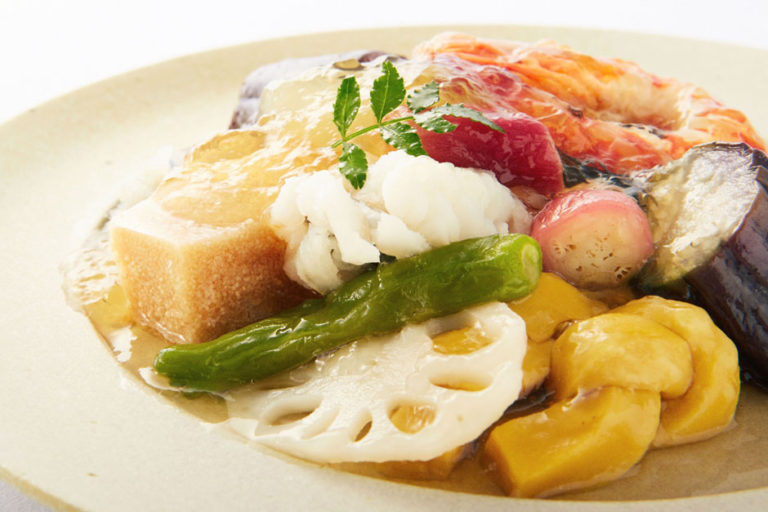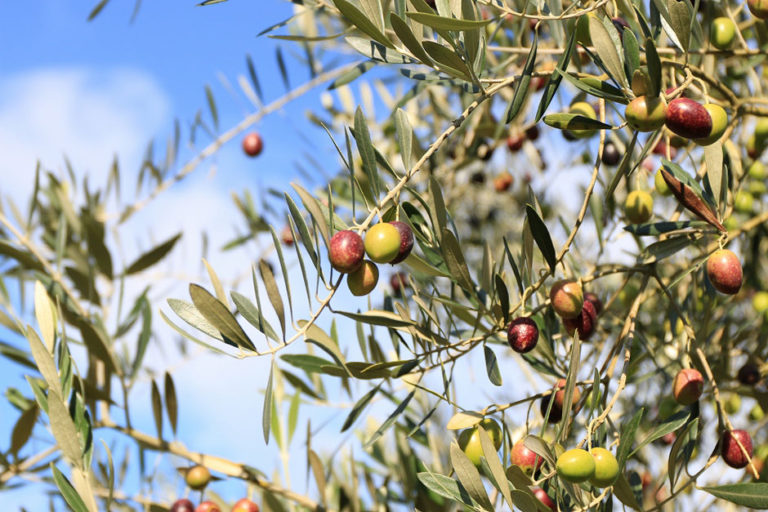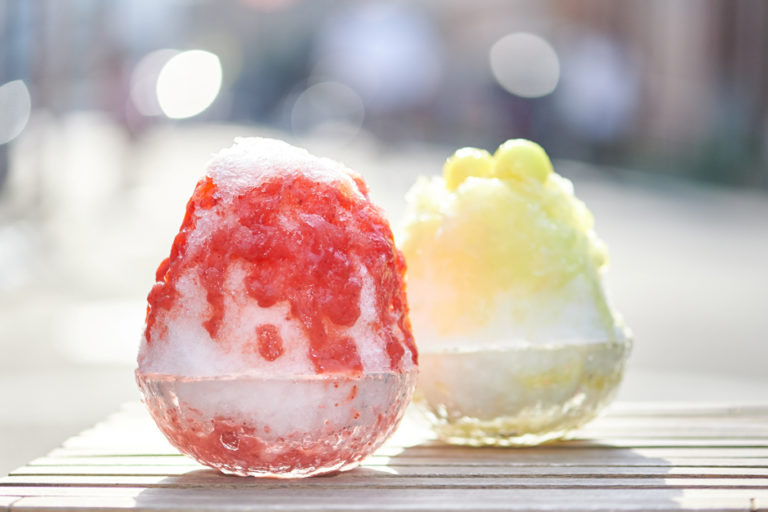Delicious welcoming sukiyaki from a traditional restaurant
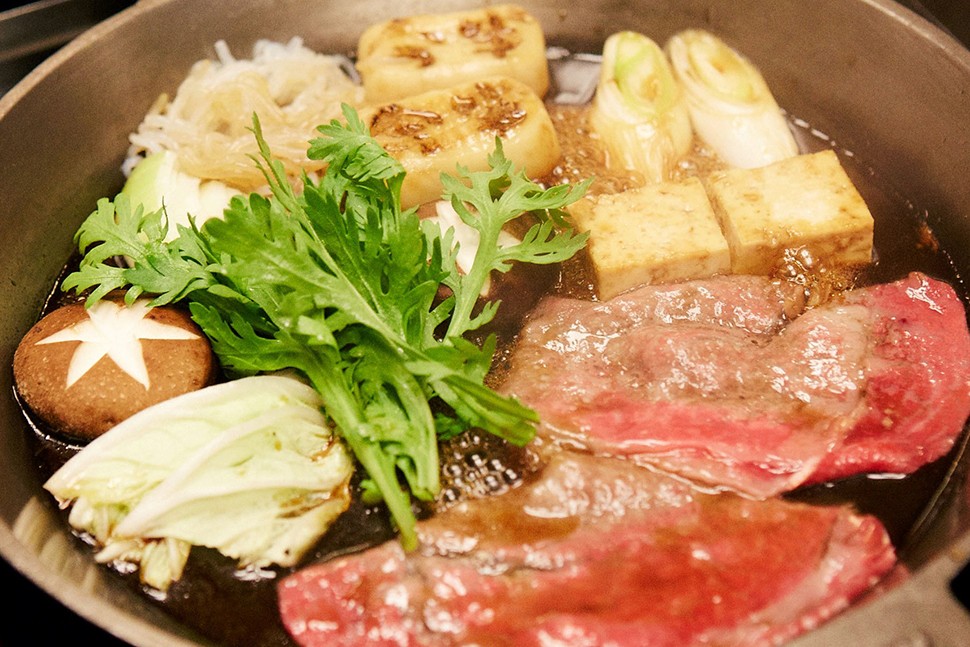
In order to explore the history of sukiyaki and its enduring appeal over the years, we paid a visit to Asakusa Imahan, which has been providing delicious sukiyaki to grateful customers since 1895.
Sukiyaki in Asakusa is the height of refinement
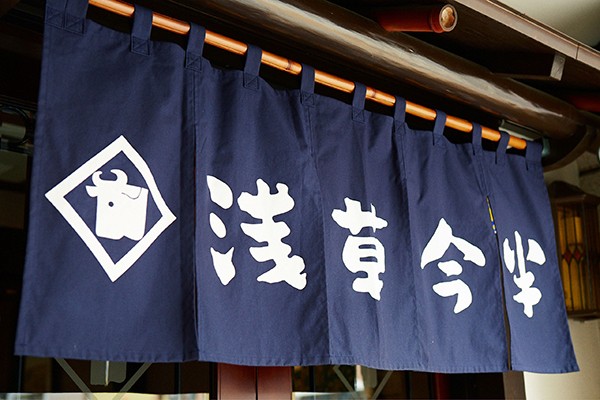
Beef sukiyaki has a relatively short history that dates back only to the late Edo period. At that time, meat was only available to the privileged classes and in certain areas of Japan; it was certainly not a food for the common people. This changed in the Meiji period, when beef hotpot vendors became popular in the Kanto district. Beef hotpot with onion proved a hit with the masses, who saw it as symbolic of the process of civilization and enlightenment that was taking place at the time.
Asakusa was one of the busiest parts of Tokyo back then, and still retains a lively downtown feel today. This is the home of Asakusa Imahan, a business steeped in tradition and boasting a history stretching all the way back to 1895. The main restaurant, situated on Kokusai Dori street, has a spacious Japanese-style room with conventional chairs and tables as well as Japanese sunken tables. We are greeted by a smiling attendant (or nakai-san) dressed in a traditional kimono, which creates an air of excitement and expectation. Sukiyaki is of course one of Japan’s best-known dishes, so it is only right that we should sample this wonderful food here in truly authentic surroundings.
Use only the finest ingredients
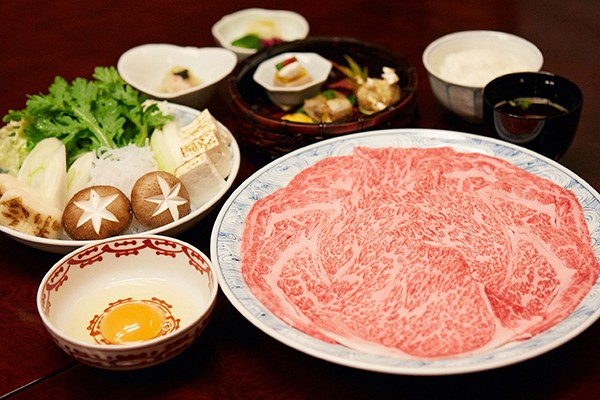
It is important to use only the very best ingredients in nabe dishes, so that you can really savor the natural flavors of the individual pieces. Asakusa Imahan takes great care to select the finest foods for sukiyaki, based on professional expertise built up over many years. The primary ingredient is of course beef, and Asakusa Imahan insists on meat from Japanese Black or Kobe Beef cows. The quality of the meat is evidenced in the richly marbled appearance. Asakusa Imahan slices the meat to just the right thickness?not too thin and not too thick. The other key ingredient of sukiyaki is spring onions. Asakusa Imahan uses a variety called Senjunegi, a longstanding staple of the Edo (Tokyo) region known as the king of the onions because it offers the perfect balance of sweetness and sharpness for cooking. Other ingredients typically include tofu produced right here in Asakusa, Chinese cabbage, onion (the round type), shiitake mushroom, shungiku (chrysanthemum), shirataki (starch noodles), and fu, the equivalent of tiny croutons. The fu are custom-made in Kyoto and individually stamped with the Asakusa Imahan logo.
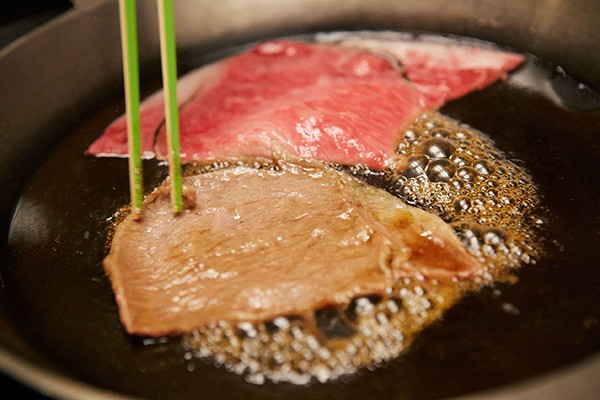
The ingredients thus selected are cooked in a simple soy sauce concoction known as warishita. Asakusa Imahan prepares the beef and vegetables in a predetermined sequence, rather than all at once. The timing is very important, but luckily our waitress explains it all to us as she prepares the food. Today we are being served by Ms. Takayama, a veteran with over 20 years of experience. She pours the warishita into the pot, waits for it to come to the boil, then gently places slices of beef in the pot, one at a time. There is a wonderful sizzling sound as the beef hits the pan, and a delicious aroma fills the air and tempts the taste buds. When cooked, the beef is transferred to another dish of raw egg. Now it is time to cook up the remaining ingredients. Takayama explains that these can be cooked in any order. Part of the fun of sukiyaki is choosing things at your own pace.
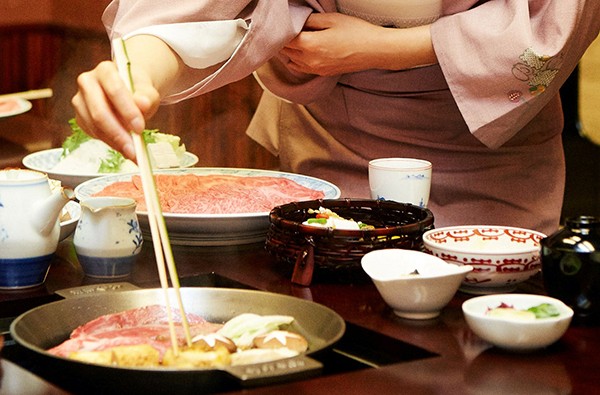
Once the beef is mixed with the egg, it’s ready to eat. The egg makes the sweet soy-sauce flavor of warishita a little more mild. The delicious juice from the marbled beef is so tasty that you can’t help breaking into a grin. Meanwhile, the warishita essence seeps right into the vegetables, bringing a burst of sweetness with every bite. The soy sauce and sugar combination that is so central to Japanese cuisine helps to enhance and accentuate the individual flavors of the vegetables and other ingredients, creating the perfect match.
Attention to service is key
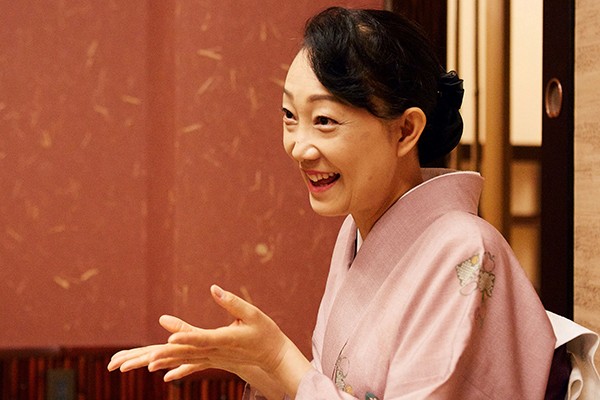
We were so engrossed in the wonderful flavors of the sukiyaki that we almost forgot to keep an eye on the pot. Our waitress has explained that while she is not staying with us the entire time, she will come back every now and then to check how we are going. She says that people sometimes get so caught up in conversation that they forget to check their food and the sauce burns. If that happens, the nakai-san will add more warishita or meat and vegetables to keep the process going. “At the same time,” adds Takayama, “the cooking process should never get in the way of conversation. I will be discreetly in the background at all times, so if you need help just let me know.”
Takayama provides us with excellent service and is at our table in a flash to help us out, even before we have a chance to call. This attention to customer satisfaction is all part of the experience at Asakusa Imahan, and makes the sukiyaki taste that much better.
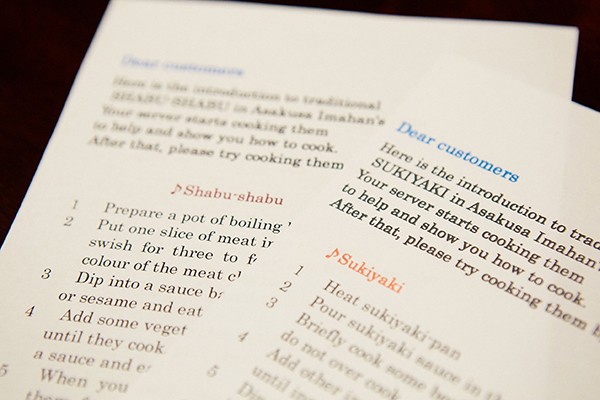
For the benefit of the customer, Asakusa Imahan even provides notes in English explaining how nabe are prepared. “We’re been getting increasing numbers of customers from overseas in recent years,” says Takayama, “and we have been working hard on our English language skills so that we can explain the basics of sukiyaki to our foreign guests. We have regular English classes here in the restaurant.” In this way, the staff at Asakusa Imahan are mindful to maintain the traditional aspects of their work while moving ahead with the times. This illustrates the commitment to service that is a hallmark of a traditional business.
Asakusa is still one of Tokyo’s main downtown districts, home to the Asakusa Jinja Sanja-matsuri as well as the Sensoji Temple Hozuki market and legendary New Year celebrations. With so much to see and do, Asakusa is brimming with tourists all year round. The Asakusa Imahan restaurant, imbued with the traditional feel of the Edo period, is the perfect place to try a meal of Japan’s most famous culinary export, sukiyaki.
Enjoy the authentic taste of sukiyaki at home
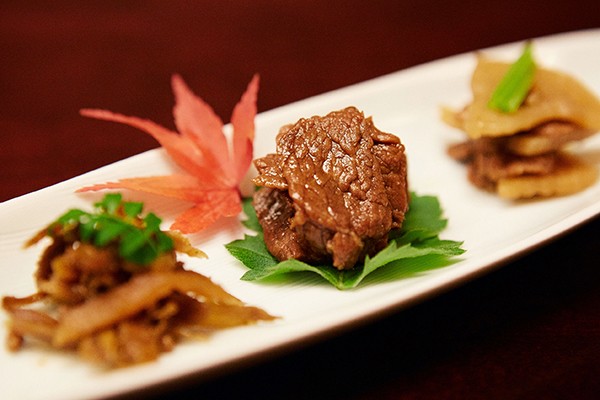
Gyuniku Tsukudani is a pre-packaged beef sukiyaki product that allows you to enjoy the authentic taste of sukiyaki in the comfort of your own home. It was created in 1945 by third-generation owner Motoichi Takaoka in response to strong demand from customers for a take-home product. Gyuniku Sukiyaki Tsukudani was developed by Takaoka by boiling domestic beef in his own special sukiyaki sauce to make it tender.The boiling process produces a wonderful rich flavor that makes the ideal side dish to have with rice or drinks.
Gyuniku Tsukudani is the perfect way to enjoy the traditional flavors of downtown Asakusa at home.

